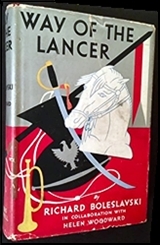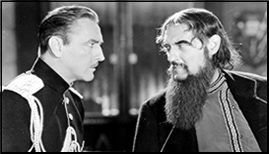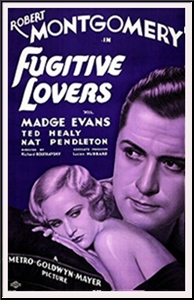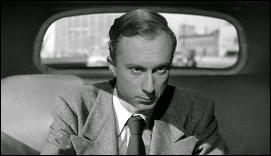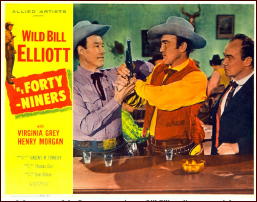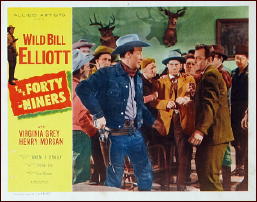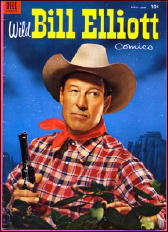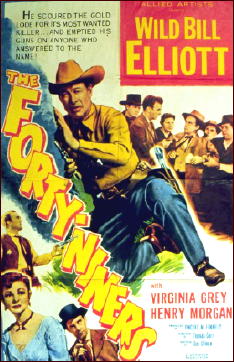Thu 16 Jan 2020
David Vineyard Reviews Two EDMUND LOWE Detective Films.
Posted by Steve under Movie stars & directors , Mystery movies , Reviews[11] Comments
Reviewed by David Vineyard.
GUILTY AS HELL. Paramount Pictures, 1932. Edmund Lowe (Russell Kirk), Victor McLaglen (Captain T. R. McKinley), Adrienne Ames (Vera Marsh), Henry Stephenson (Dr. Tindal), Richard Arlen (Frank Marsh). Screenplay Arthur Kober, Frank Partos, based on a play by Daniel N. Rubin. Directed by Erle C. Kenton.
MAD HOLIDAY. MGM, 1935. Edmund Lowe (Philip Trent), Elissa Landi (Peter Dean), Zazu Pitts, Edgar Kennedy, Ted Healey, Edmund Gwenn, Gustav von Seyffertitz, Raymond Hatton. Screenplay Florence Ryerson, Edgar Allan Woolf, based on the story “Murder in a Chinese Theatre†by Joseph Santley. Directed by George B. Seitz.
If anyone played more detectives in film than Edmund Lowe or appeared in more crime films as a lead actor, you would be hard pressed to find him. The number of his films where he is a detective, secret agent, or criminal is impressive. Even William Powell and Preston Foster, who run him a close second, really don’t come all that close. Lowe even played Philo Vance in The Garden Murder Case.
These two fast-talking mystery films are a good cross section of his output, not his best (Bombay Mail, Seven Sinners) but not his worst either.
Guilty as Hell from 1932 is an unusual stylish murder mystery (I don’t know whether to credit director Kenton or cinematographer Karl Struss for the film’s look) featuring Lowe and Victor McLaglen as reporter Russell Kirk and his best friend/greatest rival Captain. T. R. McKinley. Lowe and McLaglen were a popular screen team at the time, McLaglen replacing Louis Wohl, who had been Lowe’s foil in silent films and early talkies.
McLaglen, who could play dumb or smart, slick or rough, was a good match for Lowe on screen and even when the script is weak, their team-ups are worth catching.
Here we open with Dr. Tindall (Henry Stephenson) a surgeon known as “Chickels†for his habit of chewing gum while he works, murders his younger and unfaithful wife (no spoiler) in a well shot scene that effectively shows Stephenson’s wife’s face reflected in his glasses while he murders her.
In short order, playboy Frank Marsh (Richard Arlen) is framed for the crime, convicted, and sentenced to die, all of which is fine with hard-boiled reporter Kirk until he meets Frank’s beautiful sister Vera (Adrienne Ames). Kirk still thinks Frank is guilty but sets out to clear him to win over Vera. Girl-chasing and the rivalry it causes is a running theme in he Lowe/Wohl and the Lowe/McLaglen films.
The mystery is fairly standard stuff with the usual lapses in logic but this one is handsomely shot with the use of closeups and camera angles and shadows mindful of German Expressionist cinema. The script is rapidly paced, and the back and forth between Lowe and McLaglen well done (“There’s only one thing wrong with this country,†Lowe opines after finding out McLaglen tore up a check they were to share, “they shot the wrong McKinley.â€).
Suffice it to say, the guilty man is caught (relatively cleverly) and the innocent man saved, and rather refreshingly Lowe discovers the girl he risked all for is engaged and gets left in the lurch (another theme common to the team-ups between Lowe and Wohl and McLaglen, no one gets the girl and the bromance in more important than the romance).
Mad Holiday from 1935 is a mystery comedy clearly trying for a Thin Man vibe, and it almost succeeds, though it doesn’t quite rise to screwball genius.
Lowe is actor Philip Trent, sick to death of starring in mystery movies playing Shelby Lane, the Philo Vance-like sleuth of the Peter Dean novels. Having just wrapped his latest epic, Trent announces he is sick of Lane and Dean and off to take a cruise. His detective career is over.
Of course he barely gets on the ship and away from port before a beautiful girl shows up claiming to be in danger and a corpse shows up in this room — only to disappear. That beautiful woman turns out to be Elissa Landi, who writes the Peter Dean books under a pseudonym, teamed with studio PR guy Ted Healey planning to grab a few headlines and get Trent back on the screen as Shelby Lane in her latest bestseller already sold to the studio.
And wouldn’t you know it, no sooner has Trent outwitted that plot than a real body, Gustav von Seffertitz, shows up dead in his stateroom with a fabulous jewel he was carrying missing. Edgar Kennedy, Sgt. Donovan, who is on board to protect the jewel, is not amused by the Hollywood hi-jinks or the murder and theft.
His patience for Lowe and Landi is stretched thin to begin with.
There is a mysterious man in black, a thief (Raymond Hatton), Shelby Lane fan Zazu Pitts and her hungover dog, Von Seffertitz’s valet Edmund Gwenn, the wife (Soo Yen) of a famous Chinese actor (Richard Loo), who claims the jewel is her family’s property stolen during the Boxer Rebellion, and Healey and his stooge (Richard Hakins, not one of the Stooges) to complicate things as well as the attraction/resistance between Lowe and Landi.
And then, a bit more than halfway through the film there is a twist that makes total sense and elevates the mystery angle of this thing, playing on what even then was the audience’s expectations, based on roles played by character actors. It also provides a reason for Trent to actually turn detective, as he is accused of stealing the jewel as a result and his reputation in tattlers, and leads to the finale in the Chinese theater of the story title.
This isn’t a great film, but it is charming, moves at a pace, features attractive leads in Lowe and Landi, has a superior cast of supporting actors, and if the mystery is obvious, there is that one twist that turns the film on its head, if only for a moment.
Lowe, a reliable leading man in films like The Great Impersonation, Scotland Yard, What Price Glory?, The Spider, Chandu the Magician, and many more was still playing detective on screen as late as the nineteen fifties, when he starred in the television incarnation of radio mystery/soap Front-Page Detective. Among his better later film roles were in John Ford’s The Last Hurrah and the comedy Western Heller in Pink Tights with Anthony Quinn and Sophia Loren, but for a time in the thirties he was the go-to actor if you wanted a detective, spy, or slick criminal for your lead.
At times it almost felt as if there was a rule you had to have Edmund Lowe is a crime or mystery film, and considering his output, it wasn’t a bad rule to adhere to.
